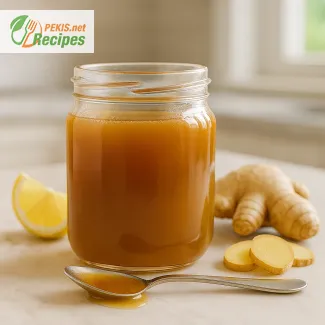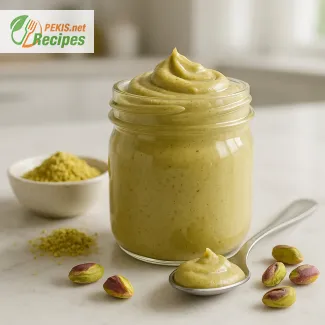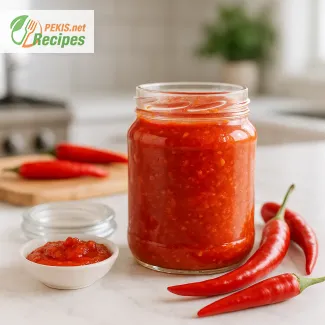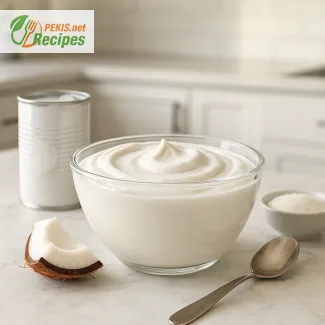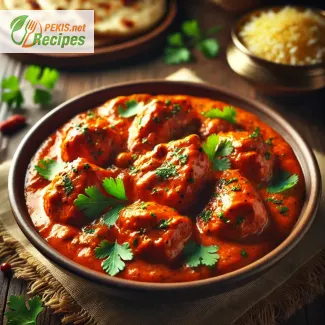
Indian Chicken Tikka Masala is more than just a dish; it's an iconic blend of flavors that has captivated taste buds across the globe, symbolizing the rich culinary heritage of India. Originating from the streets of India and brought to fame in the UK, Chicken Tikka Masala marries spices, creamy textures, and tender marinated chicken to create an unforgettable dining experience. This dish isn’t simply about chicken in a curry – it’s about the layering of spices and depth of flavor that each ingredient brings, creating a harmonious balance that is bold yet comforting.
The key to the perfect Chicken Tikka Masala lies in the marination of the chicken. Here, the chicken is often marinated in a mixture of yogurt and traditional Indian spices such as garam masala, cumin, turmeric, and chili powder, allowing the flavors to deeply infuse the meat and create tenderness that practically melts in your mouth. This marinade is essential; it not only enhances the taste but gives the chicken a distinctive color and aroma, thanks to the yogurt's acidity, which helps in breaking down the proteins. When grilled or charred, the chicken pieces achieve a smoky depth, bringing out the authentic tandoori essence that defines traditional Indian grilling techniques.
Once the chicken is ready, it’s simmered in a velvety, spiced tomato sauce that gives Chicken Tikka Masala its distinctive look and flavor profile. This sauce, enriched with tomatoes, cream, and a mix of ground spices, forms the heart of the dish. The blend of fresh and dried spices like coriander, cumin, garam masala, and cardamom creates a complexity in the sauce that elevates the chicken, while the cream smooths and balances the heat, resulting in a rich, comforting sauce that is both luxurious and accessible. This sauce clings to every piece of chicken, ensuring that each bite is bursting with flavor.
For many, the allure of Chicken Tikka Masala lies in its versatility. This dish can be tailored to suit a range of spice levels and personal preferences, making it suitable for various palates while still retaining its traditional Indian roots. Some versions add extra heat with fresh green chilies, while others dial back on the spices for a creamier, milder experience. The dish is often served with basmati rice or naan bread, which perfectly complements the creamy sauce, allowing you to soak up every drop of flavor.
From a nutritional standpoint, Chicken Tikka Masala offers a satisfying meal, rich in protein from the chicken, and containing essential antioxidants and vitamins from the spices and tomatoes. Ingredients like turmeric are known for their anti-inflammatory properties, while garlic and ginger are celebrated for their immune-boosting benefits. This means that not only is Chicken Tikka Masala delicious, but it also has healthful properties, making it a satisfying choice for both taste and well-being.
In recent years, Chicken Tikka Masala has become a globally adored dish, transcending its origins to find a place in kitchens and restaurants around the world. Whether enjoyed in a bustling Indian market, a chic London restaurant, or at home, this dish represents a journey of flavors that combines the best of Indian culinary traditions with a modern, approachable twist. The spice-forward, creamy, and slightly smoky profile of Chicken Tikka Masala has made it a go-to comfort food that never fails to impress, serving as a testament to the timeless appeal of Indian cuisine.
When you savor a plate of Chicken Tikka Masala, you’re indulging in a dish that is as much about culture and tradition as it is about flavor. It’s a dish that tells a story, weaving together the richness of spices, the art of marination, and the comfort of a creamy sauce. Every bite is an exploration of India’s culinary spirit, capturing the warmth, vibrancy, and authenticity of Indian flavors in a single, unforgettable experience. Whether you're a fan of Indian cuisine or new to it, Chicken Tikka Masala promises an inviting and flavorful journey that satisfies on every level.
- Marinate the Chicken:
- In a large mixing bowl, combine the yogurt, garlic, ginger, ground cumin, ground coriander, turmeric, chili powder, garam masala, and salt. Mix thoroughly to make a smooth marinade.
- Add the diced chicken to the marinade, ensuring each piece is well-coated.
- Cover and refrigerate for at least 1 hour, ideally overnight for deeper flavor infusion.
- Cook the Chicken:
- Preheat the oven to 200°C (390°F). Arrange marinated chicken pieces on a baking sheet lined with parchment paper.
- Bake the chicken for 10-12 minutes or until charred and cooked through. Alternatively, grill the chicken over medium heat until it has a nice sear and is cooked.
- Prepare the Sauce:
- In a large pan, heat the vegetable oil over medium heat. Add the chopped onion and sauté for about 5-7 minutes until golden and softened.
- Stir in the garlic and ginger, cooking for another minute until fragrant.
- Add cumin, coriander, turmeric, chili powder, and garam masala. Stir to coat the onions and release the aroma of the spices, about 1-2 minutes.
- Pour in the chopped tomatoes, bringing the sauce to a gentle simmer. Cook for 10 minutes, stirring occasionally, until the sauce thickens and the flavors meld.
- Add the heavy cream and stir to combine, creating a creamy, rich texture.
- Combine and Serve:
- Add the cooked chicken pieces to the sauce, stirring well to coat the chicken thoroughly.
- Simmer for an additional 5-10 minutes to allow the flavors to infuse into the chicken.
- Garnish with fresh coriander and serve with basmati rice or naan bread.
Creating a remarkable Indian Chicken Tikka Masala goes beyond following the recipe; it's about understanding and adjusting each component to suit various preferences, dietary needs, and even local ingredient availability. Here are detailed, professional tips that can help you modify, enhance, or adjust the traditional recipe to meet a wide range of tastes and requirements.
1. Marinade Adjustments for Tender and Flavorful Chicken
- Yogurt Alternative: The yogurt in the marinade serves both as a tenderizer and a flavor base. However, for those who are dairy-free, coconut yogurt can be an excellent substitute. It adds a mild sweetness that pairs well with the spices, giving a subtly different twist while still helping to tenderize the meat.
- Extended Marination: Marinating the chicken for at least one hour is essential, but marinating overnight allows the flavors to infuse even deeper. This can lead to juicier, more flavorful chicken, as the spices have ample time to penetrate. If you're short on time, even a 30-minute marinade can work, though the flavors will be subtler.
- Spice Level in the Marinade: Indian Chicken Tikka Masala traditionally has a moderate spice level, but for those sensitive to heat, reducing the chili powder in the marinade can create a milder dish. Conversely, if you prefer spicier flavors, you can increase the chili powder or add a small amount of cayenne pepper for an extra kick.
2. Cooking Techniques for Enhanced Flavor
- Char-Grilled or Oven-Roasted: For an authentic, smoky flavor, grilling the marinated chicken on high heat before adding it to the sauce is ideal. This technique, often used in traditional tandoor cooking, adds a charred taste that elevates the dish’s authenticity. If you don’t have a grill, broiling the chicken in the oven at a high temperature can achieve similar results.
- Avoid Overcooking: Chicken breast can dry out if overcooked, so aim to sear or grill it until just done, as it will continue to cook slightly once added to the sauce. You can also use chicken thighs, which are slightly more forgiving due to their higher fat content, providing a juicier texture.
3. Sauce Modifications for Different Textures and Flavors
- Creamy and Rich Variations: Heavy cream is traditional, adding richness and balancing the spices, but other options can work as well. For a lighter sauce, consider using half-and-half or even a splash of milk to reduce calories while still achieving a creamy texture. Coconut milk is another option, which can add a subtly sweet, tropical note that complements the spices beautifully, and it’s a great choice for a dairy-free adaptation.
- Tomato Intensity: The base sauce uses chopped tomatoes, which bring acidity and a slightly sweet taste. However, adding a small amount of tomato paste can intensify the tomato flavor, giving a thicker, more robust sauce. Fresh tomatoes can be used in place of canned for a fresher flavor, but they may require slightly longer cooking to break down fully.
- Smooth or Chunky Texture: The texture of the sauce can be adjusted based on preference. For a smoother, restaurant-style sauce, consider blending the sauce ingredients after sautéing the spices and onions, before adding the cream. This creates a silky texture that coats the chicken evenly. Alternatively, leaving the sauce chunky preserves a rustic feel, which is also delightful.
4. Balancing Spices for Personalized Flavor
- Adjusting Garam Masala: Garam masala is a blend of warming spices essential to Chicken Tikka Masala. If you find the flavor too intense or subtle, adjust the amount slightly to your taste. Adding it towards the end of cooking can enhance its aromatic properties, making the dish smell and taste fresher.
- Additional Spices: For a more complex spice profile, you can add a pinch of fenugreek leaves or kasuri methi, often found in traditional Indian cooking. These spices bring an earthy, slightly bitter note that enhances the dish’s overall depth.
- Sweetness Level: Some chefs add a small amount of sugar to balance the acidity of tomatoes, especially if the tomatoes are quite sour. Just 2-3 grams (½ tsp) of sugar can soften the sharpness, bringing harmony to the sauce without making it overtly sweet.
5. Accommodating Dietary Preferences
- Low-Fat Version: For a lower-fat version of Chicken Tikka Masala, you can reduce or replace the cream with Greek yogurt or light coconut milk. Additionally, using a minimal amount of oil when cooking the sauce can cut down on fat, while still keeping the dish flavorful.
- Vegetarian and Vegan Options: Chicken can be substituted with paneer (Indian cheese) for a vegetarian variation, creating a dish known as Paneer Tikka Masala. For a vegan version, consider tofu or chickpeas as protein sources; both absorb the sauce well and make for a satisfying alternative.
- Allergen Considerations: Chicken Tikka Masala is typically gluten-free; however, ensure that your spices and yogurt are gluten-free. In some cases, spices can be processed in facilities with gluten, so checking labels is essential for those with gluten intolerance.
6. Serving Suggestions and Pairings
- Choosing the Right Side Dish: Chicken Tikka Masala pairs beautifully with basmati rice, which has a mild aroma that complements the spices without overwhelming them. Naan bread is another popular option, perfect for soaking up the creamy sauce. If you want a healthier alternative, serve the dish with quinoa or cauliflower rice.
- Garnishing: Fresh coriander (cilantro) brings a burst of color and a fresh, herby taste that cuts through the creaminess. A sprinkle of freshly chopped chili or lime wedges can add brightness to each serving, balancing the richness of the sauce.
- Accompaniments: A traditional raita (yogurt-based dip with cucumber and mint) is a cooling companion, ideal for countering the heat of the spices. A simple cucumber salad can also add a refreshing contrast to the warm, spiced flavors of the Tikka Masala.
7. Storage and Reheating Tips
- Storing Leftovers: Chicken Tikka Masala stores well in the refrigerator for up to 3 days in an airtight container. The flavors often deepen over time, making it even more delicious after a day or two. If you’re planning to freeze it, leave out the cream during initial cooking and add it only once reheated to maintain a creamy texture.
- Reheating: Reheat gently on the stovetop over low heat, adding a splash of water or extra cream if the sauce has thickened too much. Microwaving is also an option, though it may slightly change the texture of the cream.
8. Health and Nutritional Adjustments
- Spice Adjustments for Health Benefits: Spices like turmeric, cumin, and coriander are rich in antioxidants and possess anti-inflammatory properties. Increasing the turmeric content slightly can enhance these benefits without significantly changing the flavor.
- Fat and Caloric Adjustments: For a leaner version, reduce or skip the oil used in cooking the sauce, and use less cream or coconut milk. Opting for low-fat yogurt in the marinade can also reduce the fat content.
- Added Vegetables: To increase the nutritional profile, you can add spinach, peas, or bell peppers to the sauce. These vegetables add vitamins, minerals, and fiber without overwhelming the dish’s flavors.
9. Presentation and Serving Tips
- Plating: Serve Chicken Tikka Masala in a shallow, wide dish to showcase the color and texture of the sauce. Placing a small mound of basmati rice on the side or layering the rice beneath the chicken creates an appealing presentation.
- Garnishing: Adding a drizzle of extra cream on top or swirling it into the sauce right before serving adds a visually appealing touch. Fresh coriander leaves placed artfully over the dish bring a pop of green, making it look even more appetizing.
- Final Touches: A small squeeze of fresh lime juice just before serving brightens up the flavors, balancing the richness and enhancing the spices.
By applying these detailed tips, you can personalize Chicken Tikka Masala to suit your preferences and nutritional goals. From texture adjustments to ingredient substitutions, each modification offers new dimensions to this classic dish, ensuring that your version of Indian Chicken Tikka Masala will be both authentic and tailored to perfection.
- Allergens: Dairy (yogurt, cream)
- Gluten-Free: Yes (ensure yogurt and spices are gluten-free)
- Substitution Tips: For a dairy-free option, replace Greek yogurt with coconut yogurt and heavy cream with coconut cream. This substitution is ideal for lactose intolerance or dairy allergies.
- Vitamin A: 500 IU - Supports eye health and immune function.
- Vitamin C: 15 mg - Promotes collagen production and immune defense.
- Vitamin E: 4 mg - Acts as an antioxidant, protecting cells from damage.
- Vitamin K: 10 mcg - Important for blood clotting and bone health.
- Potassium: 400 mg - Maintains fluid balance and supports cardiovascular health.
- Calcium: 100 mg - Essential for bone health and muscle function.
- Iron: 2 mg - Supports oxygen transport in the blood.
- Turmeric (Curcumin): 10 mg - Reduces inflammation, has antioxidant properties.
- Garlic: Contains allicin, which has immune-boosting and antioxidant effects.
- Tomatoes (Lycopene): 5 mg - Known for heart health benefits and skin protection.
- Ginger: Contains gingerol, which has anti-inflammatory and antioxidant properties.
